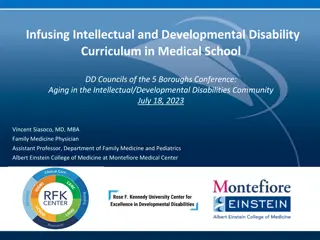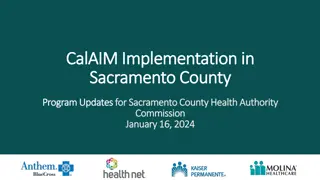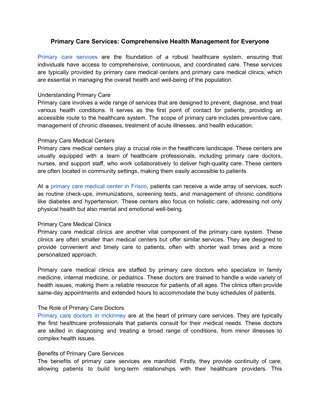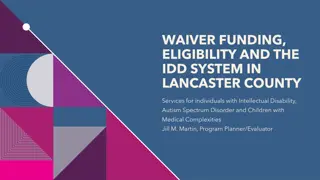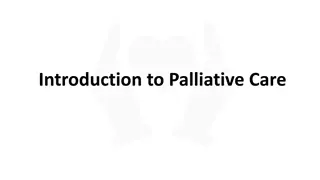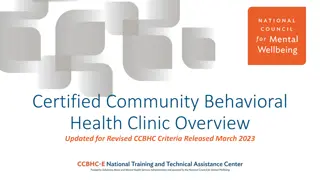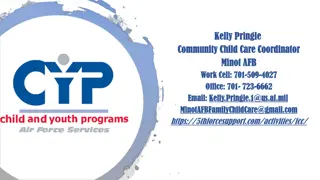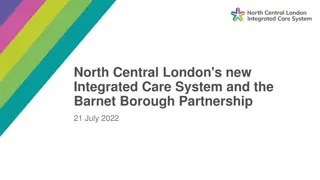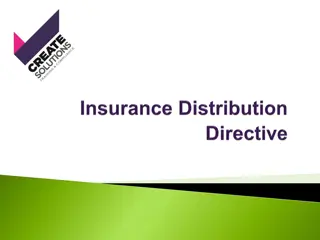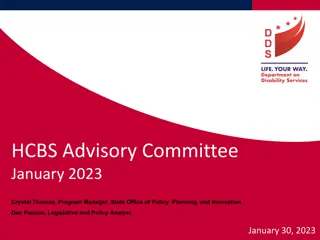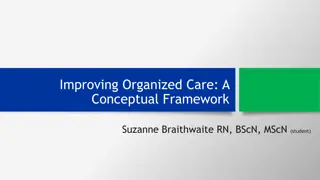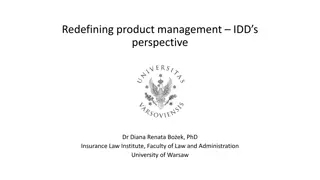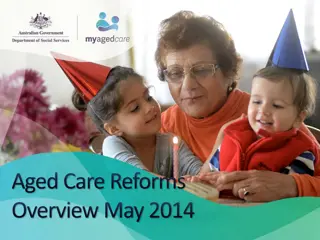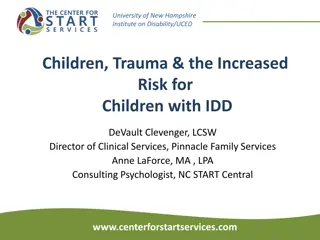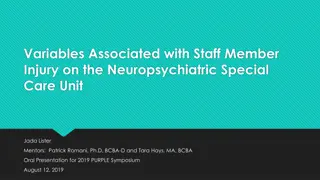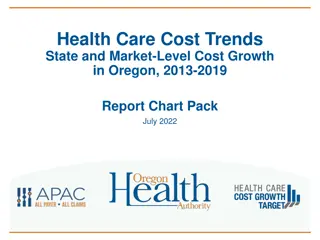Enhancing Health Care for IDD Community
Community organization prioritizing services for patients with IDD, aiming to bridge health care gaps through education and support for providers. Established in 1964, The.Resource.Exchange (TRE) offers comprehensive services like early intervention, family support, and strategic partnerships. Their efforts focus on improving health outcomes for IDD patients by educating providers, addressing care transitions, and offering resources for effective support.
Download Presentation

Please find below an Image/Link to download the presentation.
The content on the website is provided AS IS for your information and personal use only. It may not be sold, licensed, or shared on other websites without obtaining consent from the author.If you encounter any issues during the download, it is possible that the publisher has removed the file from their server.
You are allowed to download the files provided on this website for personal or commercial use, subject to the condition that they are used lawfully. All files are the property of their respective owners.
The content on the website is provided AS IS for your information and personal use only. It may not be sold, licensed, or shared on other websites without obtaining consent from the author.
E N D
Presentation Transcript
The Resource Exchange Madeline Huey PEAK Project 2019-2020 3/6/2020
Established in 1964 to provide Home and Community Based Services Waivers A community centered board for El Paso, Park and Teller counties Assist a person in accessing necessary services and supports to meet their needs Services at TRE include: Who is TRE? Navigation and Quality Service Coordination Early Intervention Baby and Toddler Playgroups Family Support Services Break Time Strategic Partnerships
Assets Needs Community organization that is considered an authority on providing services for patients and families with IDD Not well known outside the IDD community Desire to improve health care delivery for the IDD community Strong research department that has conducted community needs- based assessments and evaluations Connections and partnerships with many people in the IDD community
To improve the health of patients with IDD by supporting and educating providers through - A smaller gap between mental and behavioral health care Enhanced provider knowledge of available resources Improvements along the transition between pediatric and adult care GOALS
So, what did we do? Behaviors, Mental Health and Medical Conditions TRE and Resource Navigation Communication Strategies - Community Needs-Based Assessment survey - Special attention to provider requests for support - 3 Lunch-and-Learn Informational Sessions at Peak Vista - MD, Behavioral Health, PA, NP and support staff were invited to attend - 30 minutes
Outcomes Who attended? Session 2: Behavior Session 3: Resources Family Physician 8% Other 17% Other 25% NP 8% BHP 50% BHP 8% MA 42% MA 25% Nurse 17%
Session 2: Behavioral Management Outcomes What did they learn? 4.5 4.0 3.5 3.0 2.5 2.0 Pre-Session 1.5 Post-Session 1.0 0.5 0.0 How comfortable do you feel evaluating behavioral changes in your patients with IDD? What level of experience do you have with IDD and the co- occurrence of mental health disorders? What level of experience do you have in managing behavioral crisis situations? Session 3: Resource Navigation 5.00 4.50 4.00 3.50 3.00 2.50 Pre-Session Post-Session 2.00 1.50 1.00 0.50 0.00 How comfortable do you feel with the IDD systems of support and services? How comfortable do you feel identifying your patients current resources? How comfortable do you feel navigating resources for a patient with IDD? How useful was this lunch session in helping equip you to better care for your patients with IDD?
Overall, participants rated these sessions as useful (4.3/5) Lessons Learned Resource Navigation was the most useful session Provider demographics varied based on the topic presented Technology can be a great tool, but sometimes paper and pen is better
Future Directions For future L&L Sessions Focus more on navigation of resources Address issues with paperwork and waiver services Possibly add a session focused on appropriate DSM diagnostic codes (ie not using MR as a diagnosis) Target specific audiences For TRE s Health Initiative Start with one L&L at a clinic that focuses on resource navigation Follow-up with additional educational resources from TRE Establish stronger partnerships with primary care clinics if they want to take the collaboration to the next level
Acknowledgements Special thanks to Dr. Emily Johnson and Brystal Karber without whom I would not have been able to accomplish anything.



